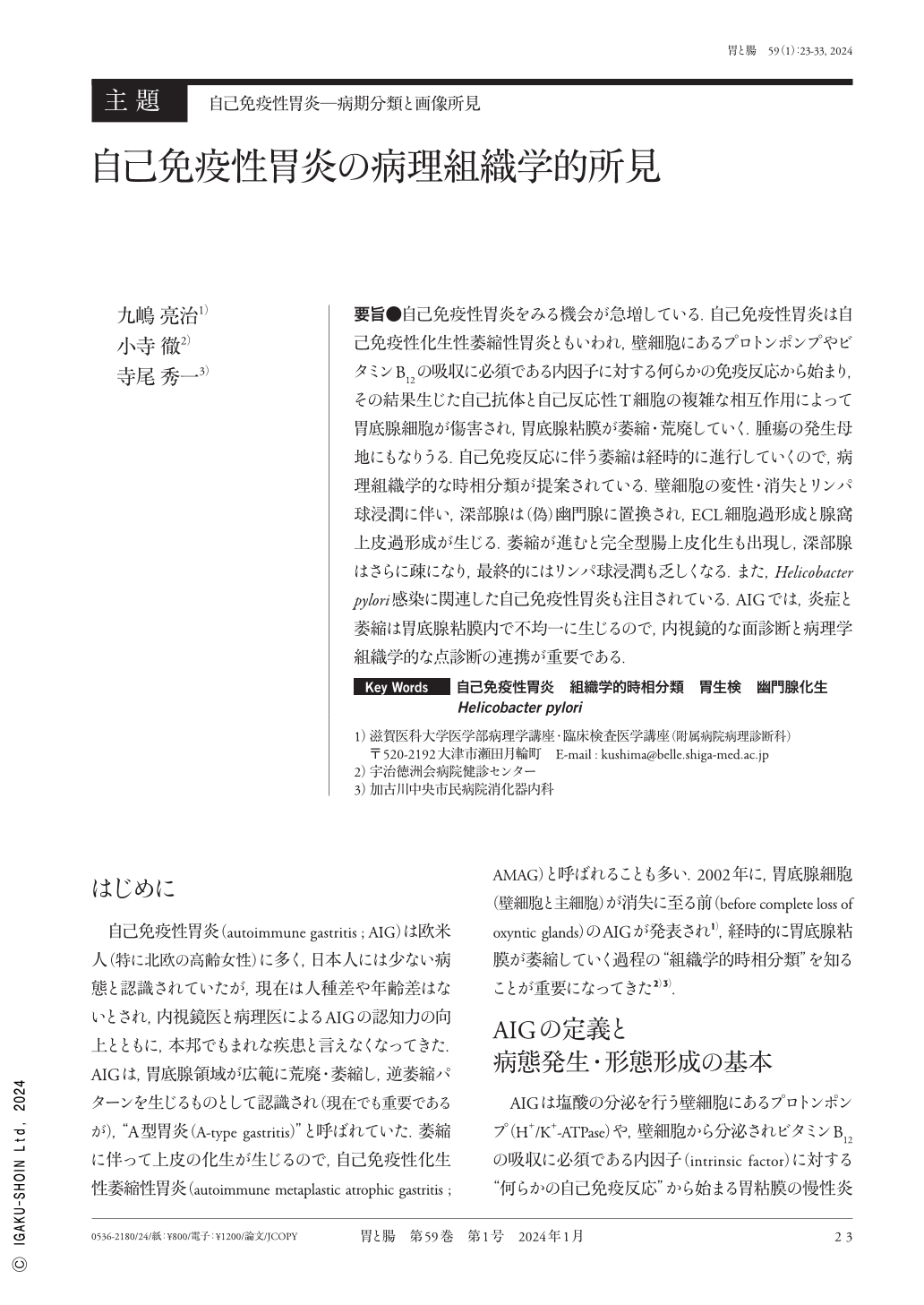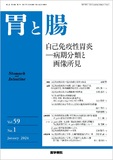Japanese
English
- 有料閲覧
- Abstract 文献概要
- 1ページ目 Look Inside
- 参考文献 Reference
- サイト内被引用 Cited by
要旨●自己免疫性胃炎をみる機会が急増している.自己免疫性胃炎は自己免疫性化生性萎縮性胃炎ともいわれ,壁細胞にあるプロトンポンプやビタミンB12の吸収に必須である内因子に対する何らかの免疫反応から始まり,その結果生じた自己抗体と自己反応性T細胞の複雑な相互作用によって胃底腺細胞が傷害され,胃底腺粘膜が萎縮・荒廃していく.腫瘍の発生母地にもなりうる.自己免疫反応に伴う萎縮は経時的に進行していくので,病理組織学的な時相分類が提案されている.壁細胞の変性・消失とリンパ球浸潤に伴い,深部腺は(偽)幽門腺に置換され,ECL細胞過形成と腺窩上皮過形成が生じる.萎縮が進むと完全型腸上皮化生も出現し,深部腺はさらに疎になり,最終的にはリンパ球浸潤も乏しくなる.また,Helicobacter pylori感染に関連した自己免疫性胃炎も注目されている.AIGでは,炎症と萎縮は胃底腺粘膜内で不均一に生じるので,内視鏡的な面診断と病理学組織学的な点診断の連携が重要である.
AIG(autoimmune gastritis)diagnoses are rapidly increasing. AIG, also known as autoimmune metaplastic atrophic gastritis, starts as an immune response against the proton pump and intrinsic factor in gastric parietal cells, causing damage to fundic gland cells by the complex autoantibody and autoreactive T cell interaction. Epithelial tumors may occur during AIG. Autoimmune reaction-associated atrophy progresses over time ; thus histopathological chronological classifications have been proposed. Fundic glands are replaced by(pseudo)pyloric glands owing to parietal cell degeneration and lymphocytic infiltration ; enterochromaffin-like-cell hyperplasia and foveolar hyperplasia occur. Complete-type intestinal metaplasia appears, deep glands become sparser, and eventually, lymphocytic infiltration becomes scarce as atrophy progresses. Helicobacter pylori infection has attracted much attention in AIG pathogenesis. Inflammation and atrophy heterogeneously occur within the fundic gland mucosa ; thus coordinating endoscopically surface diagnosis with histopathological point diagnosis is crucial.

Copyright © 2024, Igaku-Shoin Ltd. All rights reserved.


